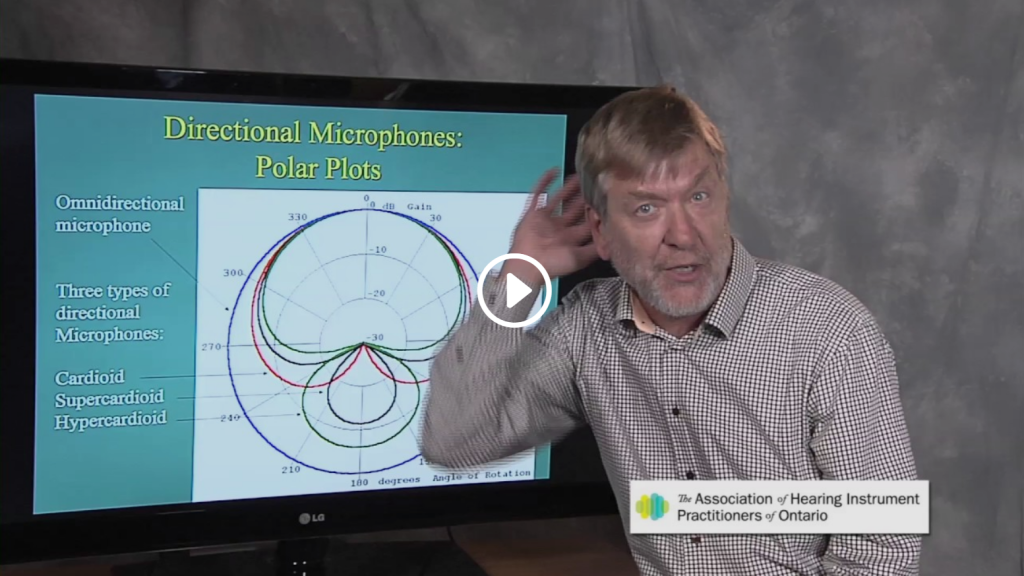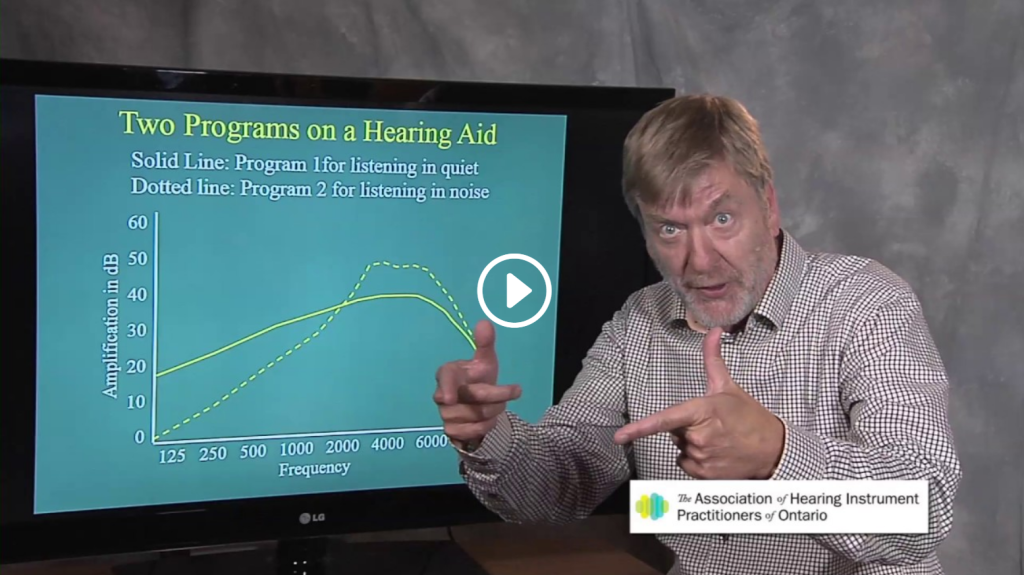Feature By Dr. Phillip Wade, DDS, MD, FRCS(C)
Despite a major breakthrough in tinnitus research by Dr. Pavel Jastreboff in the 1990s with his neurophysiological model, tinnitus (Jastreboff 1990) still remains an enigma, a puzzle yet to be completely solved. What is known to us is that in the majority of cases, tinnitus is related to peripheral hearing loss with the auditory nerve as the final common pathway of sound. Although reduced auditory input may produce tinnitus, the question is why are there tinnitus patients with normal auditory function? (This occurs about 8% of the time.) What other factors predispose these individuals to experience tinnitus?
Tinnitus is a symptom and not a disease and is associated with various risk factors such as advancing age, noise exposure, head injury and certain drugs and medications. It has been described as a phantom auditory perception (i.e., perceived sound in the absence of acoustic stimulation) and it has been classified as subjective – heard by the patient only; or objective – heard by the examiner. The latter may be pulsatile as noted with a vascular tumour in the middle ear, or non-pulsatile heard as repetitive clicking caused by intermittent contraction of the soft palate or the muscles attached to the ossicles in the middle ear (i.e., tensor tympani or stapedius muscles).
Approximately 10% of the population experience it. And children are not exempt but do appear to cope better with it. They often assume the noises they hear are completely normal and don’t complain. What causes tinnitus? Tinnitus is often a result of injury to the peripheral auditory system with many central systems involved. One theory that has some merit postulates that the dorsal cochlear nucleus in the brainstem is the generator of tinnitus as a result of peripheral injury to the outer hair cells. (Jastreboff 1995). This may be as a result of the aging process, noise exposure, head injury, or certain ototoxic medications (i.e., the same risk factors associated with tinnitus). The dorsal cochlear nucleus is activated to produce tinnitus when there is a discrepancy between the damaged outer hair cells that play a key role in the motions of the basilar membrane and normal inner hair cells.
Once generated, tinnitus is transmitted to the auditory centre of the brain in the temporal lobe. According to Jastreboff’s neurophysiological model, as long as the tinnitus remains constrained to the auditory pathway, as in approximately 80% of the population, they will experience tinnitus but not suffer from it and more readily habituate to it. The suffering is caused by involvement of the sympathetic part of the auditory system and the limbic system – the emotional part of the brain. Once the patient becomes emotionally involved, annoyed, or angry at the tinnitus, the louder it becomes. The more annoyed they get, the more they suffer – neuroplasticity at work. Unfortunately once imprinted in the brain the more difficult it is to habituate to it. Once imprinted, even cutting the auditory nerve will not alleviate it. A thorough evaluation of the tinnitus patient may indicated whether they are amenable to medical or surgical management. This would include a detailed history to note the nature of the tinnitus which might offer a clue as to the etiology – is the tinnitus intermittent or continuous; unilateral or bilateral; high or low pitched; or if it is pulsatile or non-pulsatile? A low pitched tinnitus may indicate Ménière’s disease whereas pulsatile tinnitus in syncrony with the pulse rate, suggests a possible vascular cause. A complete functional enquiry is necessary to enquire as to whether there is a past history of hearing loss, noise exposure, head injury, ototoxic medication, etc. Also, it would be important to note a history of ear infections, eustachian tube dysfunction, previous surgical intervention, or any associated vestibular disturbances.
Following the history, a full head and neck examination is mandatory. Microscopic examination of the external auditory canal might reveal wax or hair resting against the tympanic membrane producing a repetitive clicking sound. A red hue behind an intact tympanic membrane may be seen in some otosclerotic patients or an inferior mass on the floor of the middle ear in keeping with dehiscent jugular bulb. It is important to auscultate the head and neck to reveal any vascular abnormalities. Finally, if warranted, a complete otoneurological examination might be indicated to include examination of the cranial nerves and vestibular system.
A full audiological assessment follows along with radiographic imaging, as required. A high resolution CT or MRI or possible angiography may be needed as a diagnostic adjunct for tumors of the internal auditory canal or vascular tumours at the base of the skull. In patients with pulsatile tinnitus carotid Doppler (ultrasonography of the carotid arteries) might confirm an obstruction. Blood tests to include testing for vitamin B12 deficiency, lipid abnormalities or thyroid abnormalities are rarely helpful.
What options do we have in treating tinnitus? First of all, almost everybody experiences brief periods of tinnitus at times, especially youngsters following loud concerts but fortunately most people are not too concerned about it and often, reassurance will allay apprehension. Loud tinnitus is less than 10 dB sensation level and even though patients may be experiencing loud chronic tinnitus, many can be easily distracted by everyday noise at work and at play, and complain only about it when in quiet (Dobie 2004). Sleep disturbance is not uncommon. They may have difficulty in initiating sleep with tinnitus or waking up with it, and unable to get back to sleep after. For most patients, it is only a nuisance factor which requires explanation and reassurance to help alleviate the symptom over time.
Unfortunately 20% of patients are suffering from chronic tinnitus. Many, if not most have some predisposing psychological problem (e.g., anxiety or depression). In some, it may start gradually and in others there may be an immediate onset. In the latter group of patients, the onset often occurs at the time of a severe grief reaction (e.g., the loss of a loved one, a failed marriage, loss of a job, etc.). They usually do not make the connection. In the case of the lost loved one, especially if it was due to medical condition, they may become anxious that their tinnitus is possibly associated with the same condition. The more anxious they become, the louder the tinnitus – further increasing their anxiety. Presently curing tinnitus is an elusive goal. The most successful treatment to date is directed not as much at treating the tinnitus sensation itself, but at the suffering caused by the tinnitus. Counselling, possibly in conjunction with a psychologist and/or support groups, may be extremely helpful.
The Tinnitus Retraining Therapy program designed by Dr. Jastreboff is one of several approached that combines the element of counselling with gradual habituation to the sound centrally with the use of sound generators. (Jastreboff and Jastreboff 2000). The sound generators, by partially masking the tinnitus, allow the brain not only to gradually habituate to the white noise but to the tinnitus itself. The drawback is that this is a prolonged process involving wearing the device continually during waking hours over a 12- to 24- month period. The patients therefore have to be very motivated. Success rates of 80% have been reported in the literature for numerous international centres. Medical treatment when held up to high levels of accountability by randomized clinical trials (RCTs) has been found wanting. Xanax – a benzodiazapine – has been shown on one RCT to reduce tinnitus sensations but drug dependence can be problematic (Johnson et al. 1993). Anticonvulants, antiarrythmics, and various miscellaneous drugs such as melatonin (Roseberg et al. 1998), betahistine (Kay 1981), eperisone (Kitano et al. 1987), etc. have failed on RCTs to demonstrate benefit. Zinc in one RCT in Turkey (Paaske et al. 1991) showed some benefit (a number of these patients were zinc deficient) but no benefit was found on another RCT. Homeopathic medications such as Ginko biloba which has been widely used has failed to show improvement on most RCTs. (Drew and Davies 2001). In other homeopathic remedies there is concern about the consistency of the drug and possible side effects or significant drug interactions. The most successful drug treatment presently is directed towards treating depression and minimizing sleep disturbance. Nortriptyline (an antidepressant) at bedtime has been widely recommended in such patients (Dobie et al. 1993).
Do non drug treatments work? Electrical stimulation if the inner ear, biofeedback, and acupuncture have all been tried with varying degrees of success. Electrical stimulation of the inner ear to suppress tinnitus is not new and various forms of wearable devices have been tried since the nineteenth century but it is the result of coclear implant technology that has been the most interesting. Many patients who have received such implants have noted as a welcome side effect that their tinnitus is reduced. This suppression is likely on the basis of restoring spontaneous activity in the auditory nerve, if indeed it is believed that tinnitus is a result of reduced activity due to some pathological process. Further research is required in this direction. Biofeedback may have a role to play. It is known that in some patients, their tinnitus may fluctuate on contraction of the jaw muscles. This would suggest some connection between the trigeminal nerve which activates these muscles and the auditory nerve. Reducing muscle tension by the means of biofeedback techniques therefore might reduce tinnitus. Unfortunately, it has been hard to evaluate it since it is difficult to address the placebo effect and, up to date, there is little evidence to support this therapy.
Many patients have tried acupuncture and often report initial success but for this form of therapy the initial success is most likely a placebo effect. Is surgery an option? This is certainly an option for some patients. Those who have lost hearing due to otosclerosis often complain of associated tinnitus. Surgery for otosclerosis will improve hearing dramatically in 90% of patients but it is a 50/50 proposition for the improvement of the tinnitus. Unfortunately there is a slight chance of making the tinnitus worse. For patients with Ménière’s disease and have failed medical treatment, acoustic nerve section, endolymphatic sac surgery, labrynthectomy, and ablation with ototoxic antibiotics through a myringotomy tube, may reduce tinnitus but potentially could make it worse. Approximately 50% of patients who have acoustic neuroma surgery to remove a tumour in the internal auditory meatus pressing on the auditory nerve have also noted a decrease in their tinnitus. Similarly reduction of tinnitus has been noted after a removal of a vascular tumour in the middle ear. Unfortunately in all of the above surgical procedures, hearing loss is a possibility and in some cases, it is guaranteed.
References
Jastreboff PJ. Phantom auditory perception (tinnitus): mechanisms of generation and perception. Neuro Sci Res 1990;8:221-54.
Jastreboff PJ. Tinnitus as a phantom perception: theories and clinical implicatons. . In: Vernon J, Moller AR, eds. Mechanisms of Tinnitus. Boston: Allyn and Bacon; 1995:73-94.
Dobie RA. Suffering from tinnitus. In: Snow JB, ed. Tinnitus: Theory and Management. BC Decker Inc.: Hamilton, Ontario; 2004:2-7.
Jastreboff PJ, Jastreboff MM. Tinnitus Retraining Therapy (TRT) as a method for treatment of tinnitus and hyperacusis patients. J Am Acad Audiol 2000;11:156-61.
Johnson RM, Brummet R, Schleuning A. Use of alprazolam for relief of tinnitus: a double blind study. Arch Otolaryngol Head Neck Surg 1993;119:842-5.
Roseberg SI, Silverstein H, Rowan PT, Olds MJ. Effect of melatonin on tinnitus. Laryngoscope 1998;108:305-10.
Kay NJ. Oral chemotherapy in tinnitus. Br J Audiol 1981;15:123-4.
Kitano H, Kitahara M, Uchida K, Kitajima K. (1987). Treatment of tinnitus with muscle relaxant. (pp. 326-330). In: Eldman H, ed. Proceedings of the Third International Tinnitus Seminar. Munster, Germany: Harsch Verlag; 1987:326-30.
Paaske PB, Pederson CB, Kjems Q, Sam IL (1991). Zinc in the management of tinnitus: placebocontrolled trial. Ann Otolo Rhino Laryngol 1991;100:647-9.
Drew S, Davies E. Effectiveness of gingko biloba in treating tinnitus: double-blind, placebo-controlled trial. Br Med J 2001;322:73.
Dobie RA, Sakai CS, Sullivan MD, et al. Antidepressent treatment of tinnitus patients: Report on randomized clinical trial and clinical prediction of benefit. Am J Otol 1993;14:18-23.
Dr. Phillip Wade. DDS, MD, FRCS(C) is Medical Director at the Canadian Hearing Society



